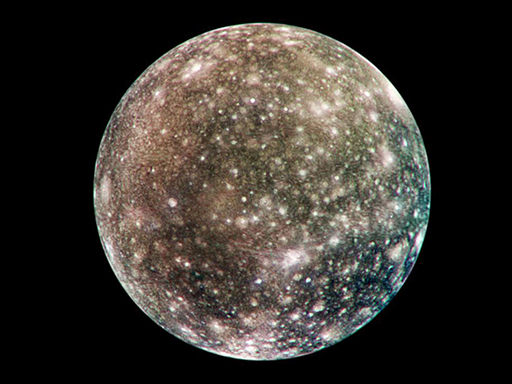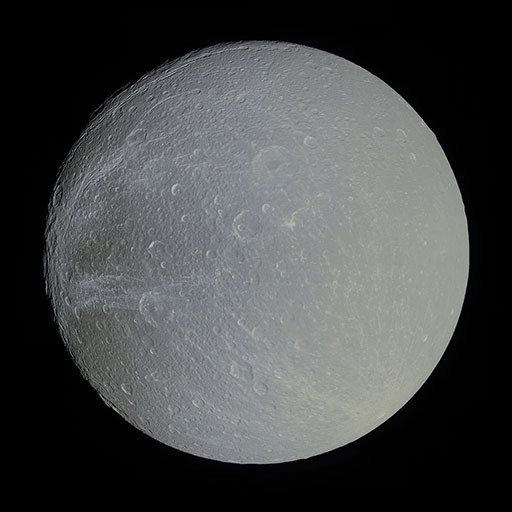1.5 Shapes of moons
The shape of a moon is largely determined by its size. Small moons such as Phobos and Deimos (both of which belong to Mars) are lumpy and potato-like, while moons like our own and Jupiter’s Galilean moons are spherical. An icy body with a diameter less than about 400 km cannot pull itself into a sphere because its mass is not great enough to generate sufficiently strong gravity to overcome the ice’s resistance to deformation. For a body made of rock (which has greater resistance to deformation than ice), the size of body required before its gravity can overcome the resistance to deformation is larger. Here are a few examples.
Callisto (Figure 8), the third-largest moon in the Solar System, is the outermost of the Galilean moons of Jupiter. It has the lowest density of the Galilean moons showing that it has a greater ice : rock ratio than the others. It has a diameter of 4820 km and is spherical.
Phobos (Figure 9) is the larger of Mars’ two moons, yet is only 22 km across. It is far too small to have enough gravity to pull itself into a sphere. Its orbit is not stable and Phobos is predicted to collide with Mars 40–50 million years from now. It is thought to be undifferentiated and so has a constant (homogenous) composition, which is thought to be the same as that of the asteroids in the belt between Jupiter and Mars.
Dione (Figure 10) is a moon of Saturn and has a diameter of 1123 km. Its mass comfortably allows it to pull itself into a spherical shape. Roughly one-third of Dione is thought to be rock. The rest is ice.
Hyperion (Figure 11) is a moon of Saturn and is one of the largest known irregular moons in the Solar System. It is thought to be the remnant of a larger moon that was destroyed by an impact. It measures 360 km along its longest axis. It has an exceedingly low density, which has led to the theory that it is made of very porous ice.




